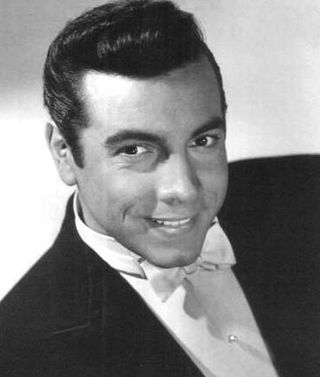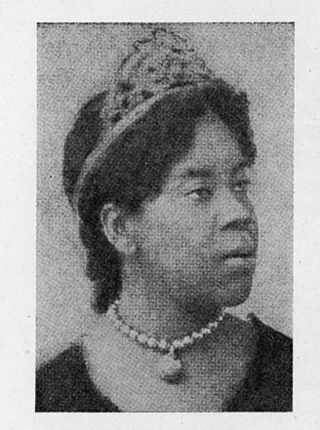
Marian Anderson was an American contralto. She performed a wide range of music, from opera to spirituals. Anderson performed with renowned orchestras in major concert and recital venues throughout the United States and Europe between 1925 and 1965.

William Edward Burghardt Du Bois was an American sociologist, socialist, historian, and Pan-Africanist civil rights activist.

William Monroe Trotter, sometimes just Monroe Trotter, was a newspaper editor and real estate businessman based in Boston, Massachusetts. An activist for African-American civil rights, he was an early opponent of the accommodationist race policies of Booker T. Washington, and in 1901 founded the Boston Guardian, an independent African-American newspaper he used to express that opposition. Active in protest movements for civil rights throughout the 1900s and 1910s, he also revealed some of the differences within the African-American community. He contributed to the formation of the National Association for the Advancement of Colored People (NAACP).

Mario Lanza was an American tenor and actor. He was a Hollywood film star popular in the late 1940s and the 1950s. Lanza began studying to be a professional singer at the age of 16. After appearing at the Hollywood Bowl in 1947, Lanza signed a seven-year film contract with Louis B. Mayer, the head of Metro-Goldwyn-Mayer, who saw his performance and was impressed by his singing. Prior to that, the adult Lanza sang only two performances of an opera. The following year (1948) he sang the role of Pinkerton in Puccini's Madama Butterfly in New Orleans.

Harry Burleigh was an American classical composer, arranger, and professional singer known for his baritone voice. The first black composer who was instrumental in developing characteristically American music, Burleigh made black music available to classically trained artists both by introducing them to spirituals and by arranging spirituals in a more classical form. Burleigh also introduced Antonín Dvořák to Black American music, which influenced some of Dvořák's most famous compositions and led him to say that Black music would be the basis of an American classical music.

Elizabeth Taylor Greenfield, dubbed "The Black Swan", was an American singer considered the best-known Black concert artist of her time. She was lauded by James M. Trotter for her "remarkably sweet tones and wide vocal compass". Trotter described her as the first African American concert singer, which has been repeated through many biographies.
The music of Baltimore, the largest city in Maryland, can be documented as far back as 1784, and the city has become a regional center for Western classical music and jazz. Early Baltimore was home to popular opera and musical theatre, and an important part of the music of Maryland, while the city also hosted several major music publishing firms until well into the 19th century, when Baltimore also saw the rise of native musical instrument manufacturing, specifically pianos and woodwind instruments. African American music existed in Baltimore during the colonial era, and the city was home to vibrant black musical life by the 1860s. Baltimore's African American heritage to the start of the 20th century included ragtime and gospel music. By the end of that century, Baltimore jazz had become a well-recognized scene among jazz fans, and produced a number of local performers to gain national reputations. The city was a major stop on the African American East Coast touring circuit, and it remains a popular regional draw for live performances. Baltimore has produced a wide range of modern rock, punk and metal bands and several indie labels catering to a variety of audiences.

Archibald Henry Grimké was an African-American lawyer, intellectual, journalist, diplomat and community leader in the 19th and early 20th centuries. He graduated from freedmen's schools, Lincoln University in Pennsylvania, and Harvard Law School, and served as American Consul to the Dominican Republic from 1894 to 1898. He was an activist for the rights of Black Americans, working in Boston and Washington, D.C. He was a national vice-president of the National Association for the Advancement of Colored People (NAACP), as well as president of its Washington, D.C. chapter.

The Cassey House is a historic house associated with the Cassey family, located at 243 Delancey Street in the Society Hill neighborhood of Philadelphia, Pennsylvania. It was owned by the Cassey family for 84 years, they were a prominent African-American family known for their philanthropy and work for the abolition of slavery, and their support for local educational, intellectual, and benevolent organizations.
Florence Cole Talbert-McCleave, also known as Madame Florence Cole-Talbert, was an American operatic soprano, music educator, and musician. Called "The First Lady in Grand Opera" by the National Negro Opera Guild, she was one of the first African American women and black opera artists performing abroad who received success and critical acclaim in classical and operatic music in the 20th century. Through her career as a singer, a music educator, and an active member of the National Association of Negro Musicians, she became a legendary figure within the African American music community, also earning the titles of "Queen of the Concert Stage" and "Our Divine Florence."
This is a timeline of music in the United States prior to 1819.

The African Episcopal Church of St. Thomas (AECST) was founded in 1792 in Philadelphia, Pennsylvania, as the first black Episcopal Church in the United States. Its congregation developed from the Free African Society, a non-denominational group formed by blacks who had left St. George's Methodist Church because of discrimination and segregation by class. They were led by Absalom Jones, a free black and lay Methodist preacher. As his congregation became established, he was ordained in 1802 by Presiding Bishop William White as the first black priest in the Episcopal Church. Bishop White also ordained William Levington as a deacon at this church, although he soon became a missionary in the South, establishing St. James Church in Baltimore in 1824.

Music and Some Highly Musical People is a history of African-American music by James Monroe Trotter first published in 1878. It represents perhaps the first attempt to assess American music across multiple genres in a single volume.
The Philadelphia Pythians was one of the earliest Negro league baseball clubs, founded in 1865. African-American leaders Jacob C. White Jr. and Octavius V. Catto established the team. The Pythians were composed of primarily business and middle class professionals from the surrounding areas of Washington, D.C., Philadelphia, and New York City. Just two years after the Civil War ended, in 1867, the Pennsylvania State Convention of Baseball, located in Harrisburg, denied the "Pythian Base Ball Club" out of Philadelphia. The team dissolved after Catto's death in 1871 and a new team formed under the Pythian name in the National Colored Base Ball League in 1887. The new team's first season went 4–1. Due to financial troubles it folded after only one season.

John C. Bowers, Jr. was an African American entrepreneur, organist and vestryman at St. Thomas African Episcopal Church, and a founding member of the first Grand United Order of Odd Fellows for African Americans in Pennsylvania. He was active in the anti-slavery movement in Philadelphia, and involved in the founding of several organizations including the Pennsylvania Anti-Slavery Society. "A fervent abolitionist and outspoken opponent of colonization, [he] was much in demand as a public speaker."

Emma Azalia Hackley, also known as E. Azalia Hackley and Azalia Smith Hackley (1867–1922), was a concert soprano, newspaper editor, teacher, and political activist. An African American, she promoted racial pride through her support and promotion of music education for African Americans. She was a choir director and organized Folk Songs Festivals in African American churches and schools. Hackley studied music for years, including in Paris under opera singer Jean de Reszke. She was a music teacher who taught Roland Hayes, Marian Anderson, and R. Nathaniel Dett. She founded the Vocal Normal Institute in Chicago.

Flora Batson (1864–1906) was a popular and well-known African-American concert singer, nicknamed "The Double-Voiced Queen of Song" because of her soprano-baritone range. She was also called "the colored Jenny Lind" in the press.

The history of African Americans or Black Philadelphians in the city of Philadelphia, Pennsylvania has been documented in various sources. People of African descent are currently the largest ethnic group in Philadelphia. Estimates in 2010 by the U.S. Census Bureau documented the total number of people living in Philadelphia who identified as Black or African American at 644,287, or 42.2% of the city's total population.
Joseph Cassey was a French West Indies-born American businessman, real estate investor, abolitionist, and activist. He prospered as a barber, and as well as a wig maker, perfumer, and money-lender. He lived in the historic Cassey House in Society Hill, and was active in the African American elite community in Philadelphia.

Henry Laird Phillips was an American social reformer and rector of the Church of the Crucifixion, an African American Episcopal Church congregation in Philadelphia. The Pennsylvania Historical and Museum Commission erected a commemorative marker outside the church in 1993. W. E. B. Du Bois praised Phillips as "one of the most valuable social reformers of the day."















